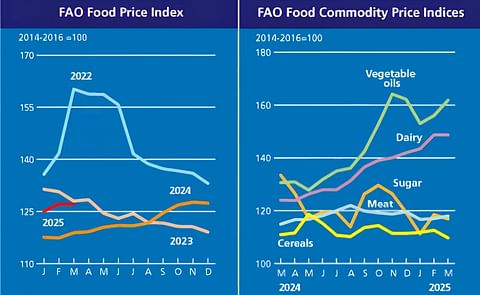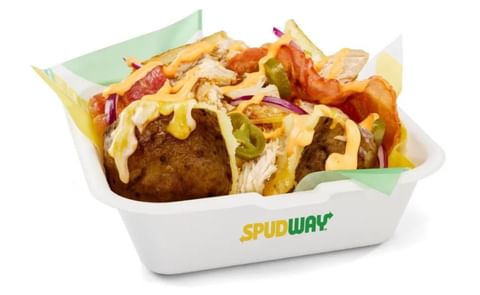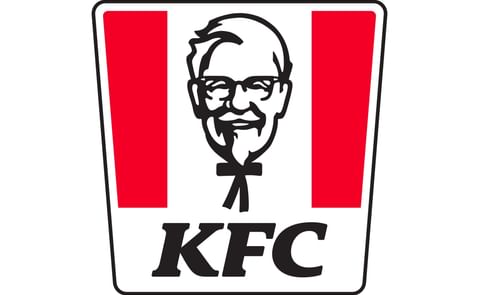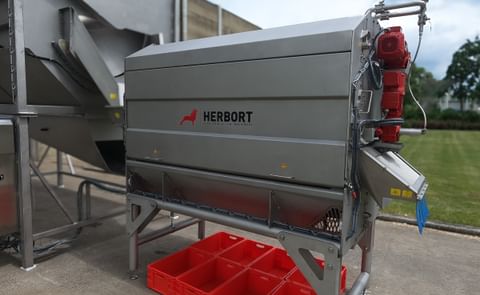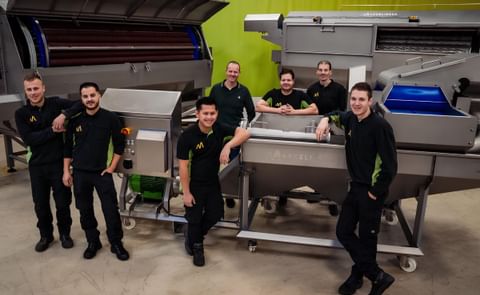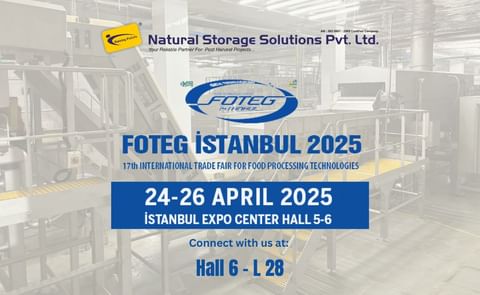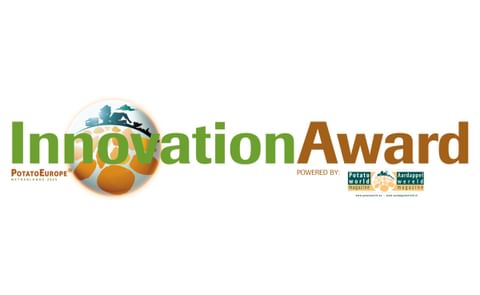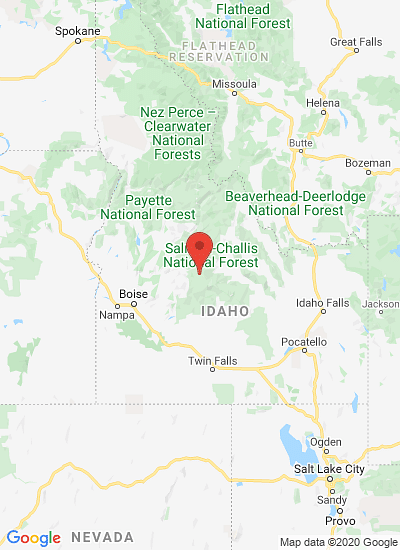Today’s high-tech devices usually contain components made of rare earth elements, a class of metallic elements including neodymium and dysprosium, which is found in everything from cellphones and computers to wind turbines and electric vehicles.
Potato wastewater could feed bacteria used to recycle high-tech devices
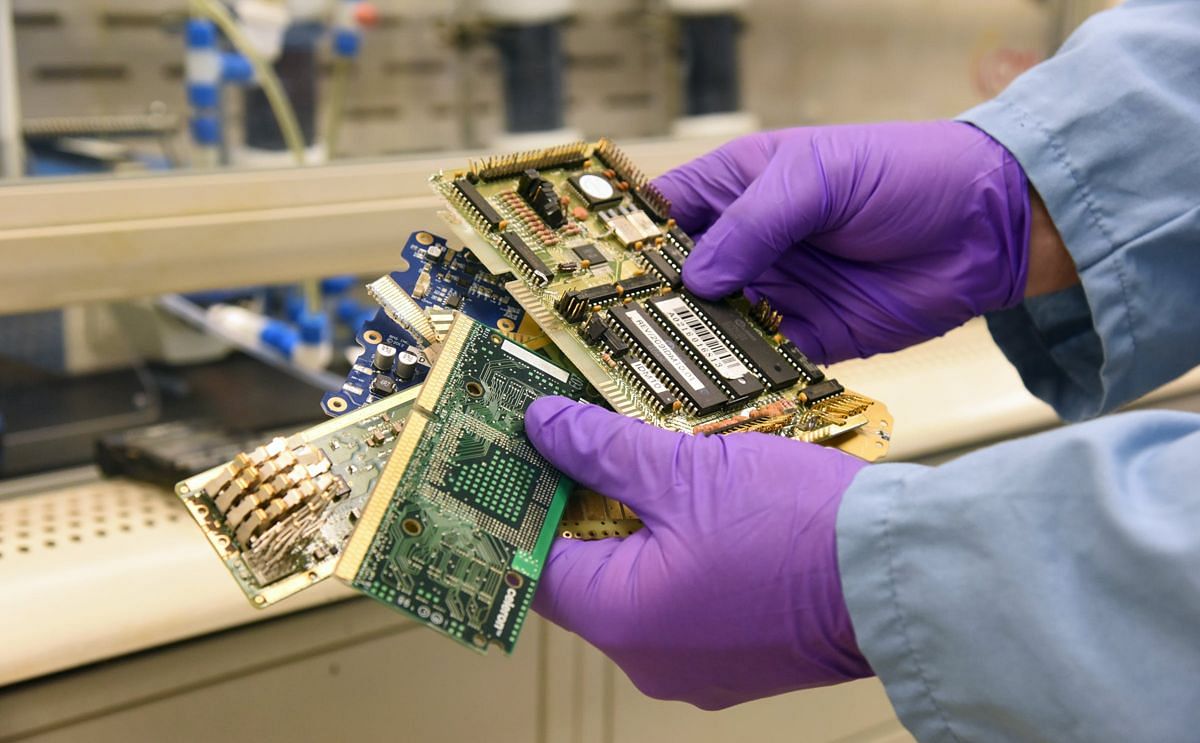
Every year, it takes millions of gallons of water to clean, peel and slice Idaho’s potatoes before they’re processed into any number of products from tater tots and animal feed to industrial starch. As a result, Idaho potato processors must treat and dispose of a large amount of wastewater that contains organic matter, silt and sand.
But now, new research from Idaho National Laboratory suggests that potato wastewater might serve well as a low-cost food source for a special bacterium that could be used to recycle high-tech devices, industrial catalysts and other sources of rare earth elements. Rare earth elements are a class of metallic elements including neodymium and dysprosium found in everything from cellphones and computers to wind turbines and electric vehicles. These elements are difficult to obtain, leaving U.S. manufacturers vulnerable to supply shortages.
An INL research team has developed an environmentally friendly way to recycle rare earth elements using a bacterium called Gluconobacter oxydans. When provided with nutrients, Gluconobacter produces organic acids that dissolve the metallic elements from the surrounding material and pull them into solution—a process called “bioleaching.”
Previously, INL researchers Vicki Thompson and David Reed conducted an economic analysis of their bioleaching process and found that the glucose used to feed the microbes was the biggest expense, accounting for 44% of the total cost.
In their most recent study, Thompson, Reed and INL senior scientist Yoshiko Fujita compared the performance and cost of glucose to alternative nutrient sources, namely potato wastewater and corn stover—the leaves, stems and cobs left over after corn is harvested. Researchers from Lawrence Livermore National Laboratory and University of Arizona also participated in the study.
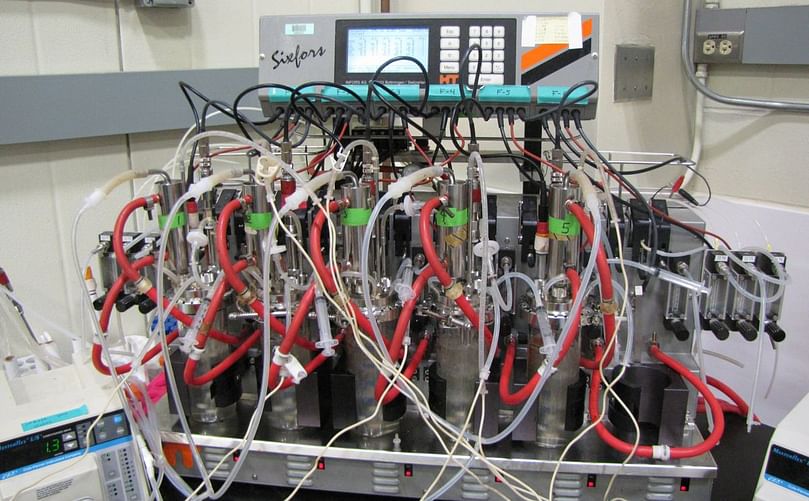
This reactor helps prepare an organic acid mixture for the bioleaching process, an environmentally friendly way to recycle rare earth elements from used electronics and industrial catalysts. Researchers at INL have discovered that potato wastewater is a cost-effective food source for Gluconobacter oxydans, the bacteria that produces the organic acid mixture.
"The big challenge is, ‘How do we reduce cost?' One thing we’re doing is using agriculture residues and food waste as a nutrient source for these microorganisms. The waste materials are also a problem for industry in some cases."Reed and his colleagues fed the bacteria the three different nutrient sources and measured how well the resulting mixture recovered rare earth elements from fluid catalytic cracking catalyst—a substance used by petroleum refineries. Potato waste performed almost as well as glucose, while corn stover was slightly less effective.
"Currently, that wastewater is something potato processors need to get rid of. They’re limited in how many potatoes they can process by how much wastewater they can dump."
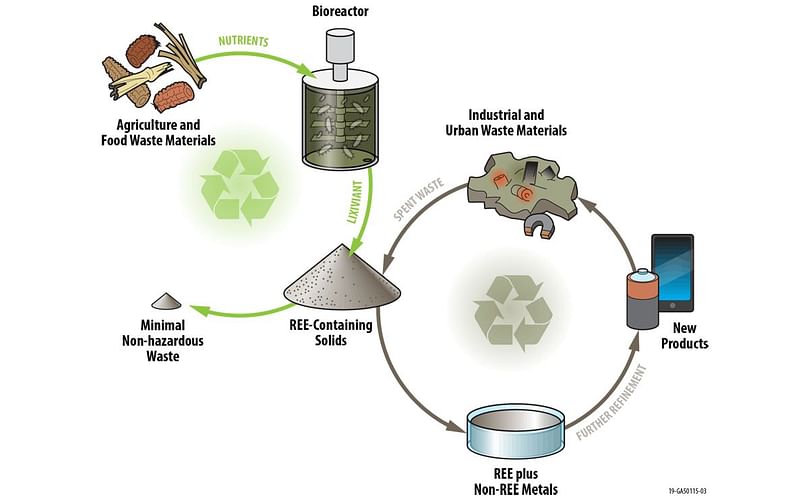
This diagram shows how the bioleaching process — an environmentally friendly way to recycle rare earth elements—can reduce two waste streams: potato wastewater and used electronic devices.
While those numbers may seem like bad news for Idaho potatoes and better news for corn, there’s a big caveat.
Vicki Thompson, a distinguished staff engineer at INL:
"What drove the economics on the potato waste was transporting it to the petroleum refinery in Salt Lake City. If you could co-locate the refinery with the potato processing facility, the cost of transporting that liquid 200 miles would disappear."Likewise, petroleum refineries in the Midwest could co-locate with sources of corn stover.
Yoshiko Fujita:
"It’s great to create new technologies to recover the rare earth elements from waste, but there are all these other factors. If we can’t do economical collection of the materials, it doesn’t really matter."Another place to improve the economics is at the potato processing facility.
David Reed:
"We did not consider any economic advantage there might be for the potato processing plant. That might make our process even more economical. It reduces or eliminates the disposal costs for the potatoes and the catalysts."In the end, both corn stover and potato wastewater are cheap nutrient sources for the bacterium to grow on, with the added benefit of reducing waste. Researchers are exploring whether municipal solid waste could serve as another food source.
David Reed:
"One waste stream is used to take care of another waste stream. And, in the process, we create a product: these metals that can be used to produce more electronics."

INL research scientist David Reed and his colleagues have found a type of bacteria, Gluconobacter oxydans, that produces organic acids suitable for extracting rare earth elements from electronics and industrial catalysts.


